We are not sure how many people give a #*^@ about Tequila or how to make Tequila but we thought that it would be nice, regardless, to show you how tequila is made and how to make your own Tequila at home.
Maybe just print this and gift it to a Tequila lover because we are also not sure how many of you curious cats will be lucky enough to get a hold of the Agave plant.
You’re welcome!
Introduction
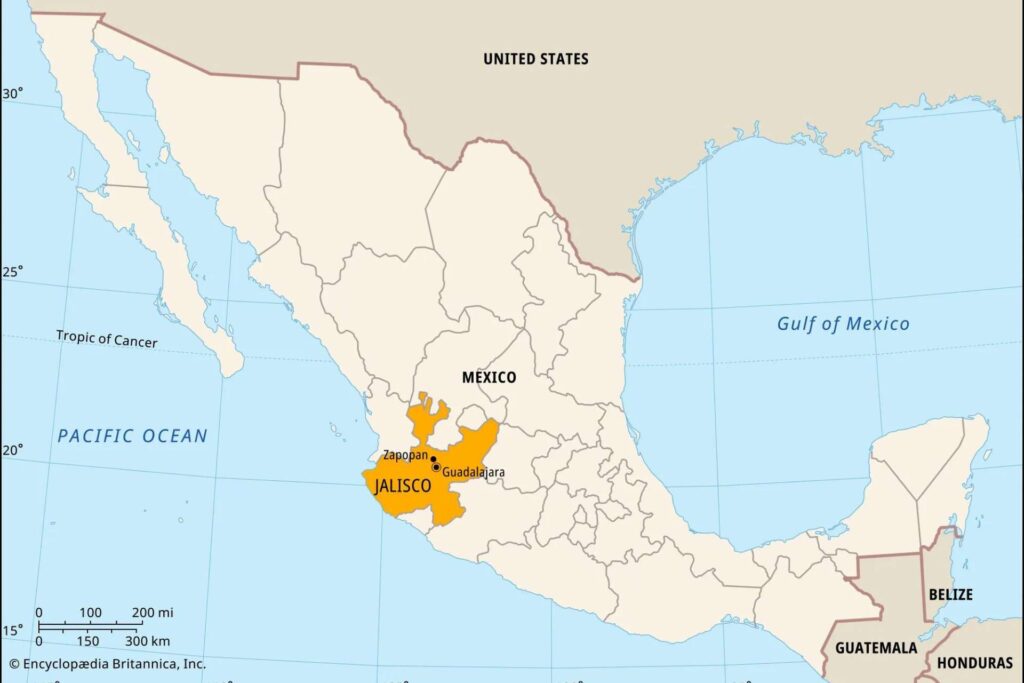
Tequila, a distilled spirit made from the blue agave plant, has a rich history and deep cultural roots in Mexico. Originating from the town of Tequila in the state of Jalisco, this iconic beverage has evolved over centuries. Today, it’s enjoyed worldwide, both as a straight drink and in various cocktails. This blog post aims to provide a comprehensive guide to understanding tequila and offer insights into making the best tequila, whether you’re a casual drinker or an aspiring home distiller.
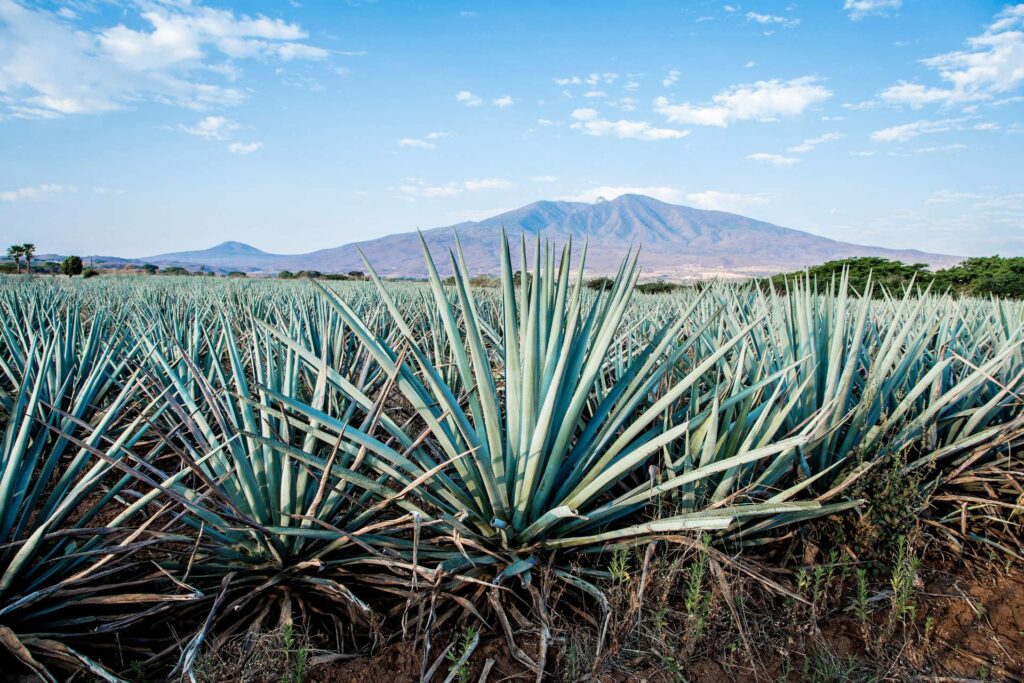
What is Tequila?
Tequila is a distilled spirit derived primarily from the blue agave plant, predominantly grown in the region surrounding the city of Tequila (See things to do in the beautiful city of Tequila or download the Spottr app when you arrive Mexico for real time hyper-personalized recommendations). There are several types of tequila, each with unique characteristics:
– Blanco (Silver): Unaged or aged for less than two months, showcasing pure agave flavors.
– Reposado (Rested): Aged between two months and one year in oak barrels, adding a mild oakiness.
– Añejo (Aged): Aged from one to three years, offering deeper flavors and complexity.
– Extra Añejo (Extra Aged): Aged for more than three years, delivering rich, nuanced profiles.
While mezcal is also made from agave, it can be produced from various agave species and often has a smoky flavor due to its unique production process.
The blue agave plant is the cornerstone of tequila. It takes about 8-12 years for an agave plant to mature, after which it is harvested by skilled laborers known as jimadors. These experts use a specialized tool called a coa to trim the spiky leaves and extract the piña, the heart of the agave plant.
The Tequila-Making Process
The journey from agave plant to tequila bottle is intricate and fascinating:
1. Growing and Harvesting Agave: Jimadors carefully select and harvest mature agave plants. The piñas are transported to the distillery for processing.
2. Cooking the Agave: The piñas are cooked to convert complex carbohydrates into fermentable sugars. Traditional brick ovens slowly roast the agave over several days, enhancing flavors, while modern autoclaves use pressurized steam for a quicker process.
3. Extracting the Juice: Once cooked, the agave piñas are crushed to extract their juice. The tahona wheel, a large stone wheel, is a traditional method that imparts unique flavors, whereas mechanical shredders are more efficient.
4. Fermentation: The extracted juice, or mosto, is placed in fermentation tanks. Here, yeast converts the sugars into alcohol. Traditional open-air fermentation can introduce wild yeasts, adding complexity, while controlled fermentation allows for more consistency.
5. Distillation: The fermented most undergoes distillation, typically twice, in copper pot stills or column stills. This process purifies the liquid and concentrates the alcohol content.
6. Aging: Tequila is aged in wooden barrels, often previously used for aging whiskey or wine. The aging process influences the final flavor, color, and complexity of the tequila.
Related Posts: Your Ultimate Guide to High-Alcohol Spirits: Perfect Picks for Lagos Show Stoppers.
Section 3: How to Make the Best Tequila at Home (Expanded)
Necessary Equipment and Ingredients
- Ingredients: Blue agave piñas or agave syrup
- Equipment:
- Large cooking pot or brick oven (or a commercial oven)
- Tahona wheel or mechanical crusher
- Fermentation tank or large glass jars
- Copper pot still or column still
- Oak barrels for aging (optional)
Step-by-Step Guide to Making Homemade Tequila
- Choosing the Right Agave
- Source mature blue agave piñas, preferably 8-12 years old. If you can’t find whole piñas, you can use 100% agave syrup.
- Cooking the Agave
- Traditional Method:
- Preheat a brick oven to around 140°F (60°C).
- Place the agave piñas inside and roast them for 24-48 hours. This slow cooking process helps to caramelize the sugars in the agave, enhancing the flavor.
- Modern Method:
- If using a commercial oven or an autoclave, set the temperature to 212°F (100°C).
- Cook the piñas for about 8-10 hours. This method is quicker but might result in a slightly different flavor profile.
- Traditional Method:
- Crushing the Agave
- Traditional Method:
- Use a tahona wheel to crush the roasted agave piñas. The tahona, a large stone wheel, will break down the fibers and extract the juice (aguamiel).
- Modern Method:
- Use a mechanical crusher or a food processor if you don’t have access to traditional equipment. Crush the agave until you have a pulpy mixture with plenty of juice.
- Traditional Method:
- Fermentation
- Collect the agave juice and pulp in a large fermentation tank or glass jars.
- Add water to the mixture in a ratio of 1:1 to ensure there is enough liquid for the yeast to ferment.
- Add a specific strain of yeast to start the fermentation process. Natural wild yeasts can also be used but may produce inconsistent results.
- Cover the fermentation vessel with a cloth to allow air circulation while preventing contaminants.
- Let the mixture ferment for 7-10 days at a temperature between 77°F and 86°F (25°C to 30°C). The fermentation process converts the sugars into alcohol.
- Distillation
- First Distillation:
- Transfer the fermented liquid (mosto) to a copper pot still. Heat the still gradually to around 173°F (78°C) to boil off the alcohol.
- Collect the distilled alcohol, known as “ordinario,” and discard the remaining liquid.
- Second Distillation:
- Redistill the ordinario to purify it further. The heads (first 5% of the distillate) and tails (last 5%) are usually discarded as they contain undesirable compounds.
- The remaining liquid, known as “silver” or “blanco” tequila, is collected and can be consumed immediately or aged.
- First Distillation:
- Aging
- If you prefer aged tequila, transfer the distilled liquid to oak barrels.
- Reposado: Aged for 2 months to 1 year.
- Añejo: Aged for 1 to 3 years.
- Extra Añejo: Aged for over 3 years.
- Aging in oak barrels will impart additional flavors and smoothness to the tequila.
- Bottling
- Once the tequila has reached your desired aging period, filter it to remove any impurities.
- Bottle the tequila in sterilized glass bottles and seal them properly.
Safety Tips and Legal Considerations
- Safety: Ensure you are working in a well-ventilated area, especially during distillation, as alcohol vapors can be flammable. Use proper safety gear, including gloves and goggles.
- Legal Considerations: Home distillation laws vary by country and region. Check your local regulations before attempting to distill alcohol at home. In some places, it may be illegal to distill alcohol without a proper license.
Section 4: Tasting and Enjoying Tequila
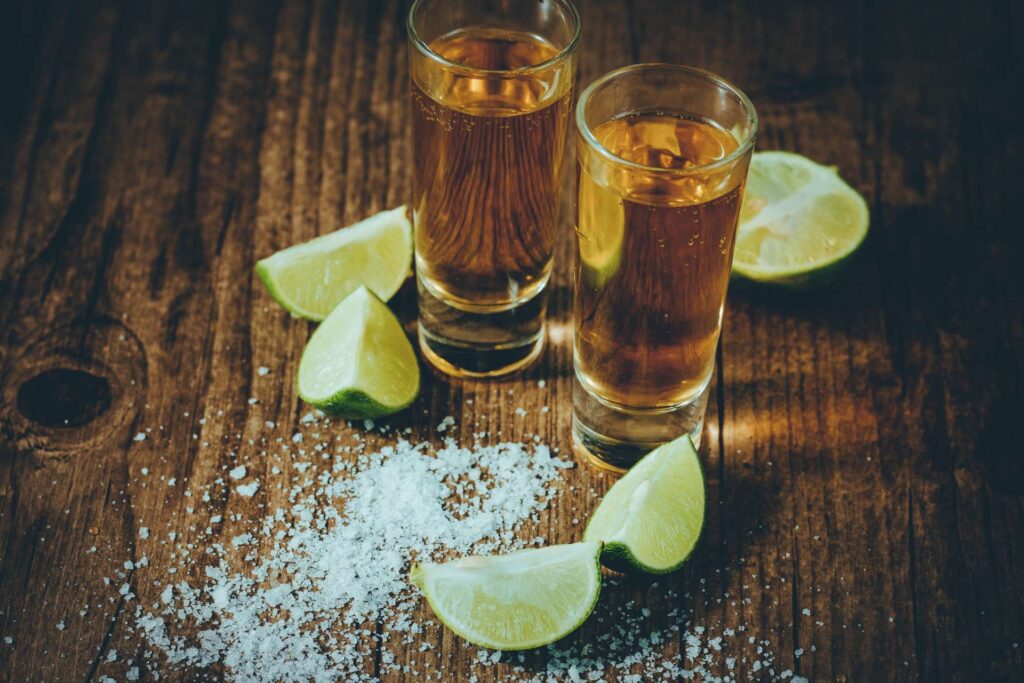
How to Properly Taste Tequila
Tasting tequila is an art that involves using all your senses to fully appreciate the nuances of this unique spirit. Here are the steps to properly taste tequila:
- Choose the Right Glassware
- Use a tequila glass or a snifter. These glasses are designed to concentrate the aromas and enhance the tasting experience. A Riedel Ouverture tequila glass or a standard Glencairn glass can work well.
- Pour and Observe
- Pour a small amount of tequila into the glass, about 1-1.5 ounces (30-45 ml).
- Hold the glass at eye level and observe the color. The color can give you clues about the aging process:
- Blanco: Clear, as it’s unaged.
- Reposado: Light gold, due to 2-12 months in oak barrels.
- Añejo: Darker gold or light brown, aged 1-3 years.
- Extra Añejo: Deep amber, aged over 3 years.
- Swirl and Smell
- Gently swirl the tequila in the glass to release its aromas.
- Bring the glass to your nose and take a moment to inhale deeply. Note the different layers of aromas. You might detect:
- Blanco: Fresh agave, citrus, and floral notes.
- Reposado: Hints of oak, vanilla, and spices.
- Añejo: Richer notes of caramel, chocolate, and dried fruit.
- Extra Añejo: Complex aromas of wood, tobacco, and dark chocolate.
- Taste
- Take a small sip and let it coat your entire palate.
- Note the initial flavors and how they develop. High-quality tequila should have a smooth entry without a harsh burn.
- Swish the tequila around your mouth to fully appreciate its texture and flavor profile. You might taste:
- Blanco: Crisp agave, citrus, and pepper.
- Reposado: Oak, vanilla, and gentle spices.
- Añejo: Caramel, honey, and cocoa.
- Extra Añejo: Deep, complex flavors with a lingering finish.
- Finish
- Pay attention to the finish, or aftertaste. High-quality tequila will have a long, pleasant finish without bitterness.
- Note the flavors that linger on your palate and how they evolve over time.
Pairing Tequila with Food
Pairing tequila with food can enhance both the drink and the dish. Here are some traditional and modern pairings to try:
- Traditional Mexican Pairings
- Tacos al Pastor: The smoky, spicy flavors of pork tacos pair well with the crisp, clean taste of Blanco tequila.
- Ceviche: The bright citrus flavors of ceviche complement the fresh, herbal notes of Blanco tequila.
- Mole Poblano: The rich, complex flavors of mole sauce pair beautifully with the deep, caramel notes of Añejo tequila.
- Modern Culinary Pairings
- Grilled Meats: Reposado tequila pairs well with the charred, smoky flavors of grilled steak or chicken.
- Seafood: Añejo tequila’s smooth, rich flavors enhance the sweetness of dishes like grilled shrimp or lobster.
- Spicy Dishes: The heat of spicy foods can be balanced by the smooth, creamy texture of Extra Añejo tequila.
Tequila Flights and Tastings
Hosting a tequila tasting or flight is a great way to explore different types of tequila and understand their unique characteristics.
- Select a Range of Tequilas
- Choose a variety of tequilas, including Blanco, Reposado, Añejo, and Extra Añejo, to showcase the differences in aging and flavor profiles.
- Arrange the Tasting
- Pour small amounts of each tequila into individual glasses.
- Arrange the glasses in order of aging, from Blanco to Extra Añejo.
- Guided Tasting
- Provide tasting notes for each tequila and encourage participants to take their time observing, smelling, and tasting each one.
- Discuss the flavors, aromas, and finishes of each type, and encourage participants to share their impressions.
- Pair with Snacks
- Offer a selection of light snacks, such as citrus wedges, nuts, and chocolate, to cleanse the palate and complement the tequila.
Section 5: Cocktail Recipes
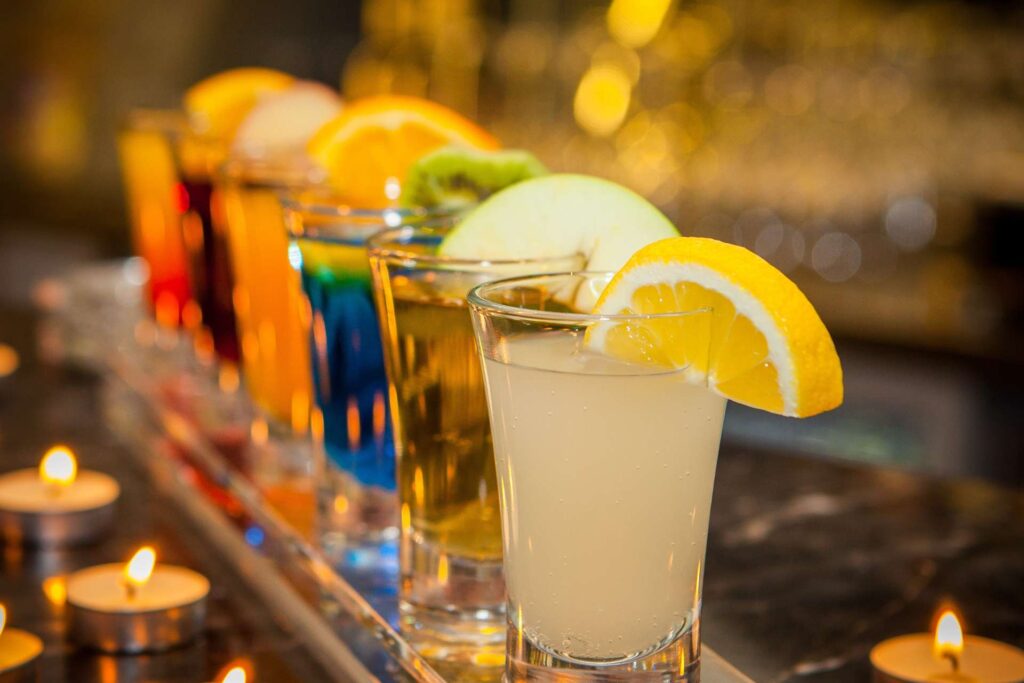
Tequila is a versatile spirit that can be used to create a wide range of delicious cocktails. Here are some classic and creative tequila cocktail recipes to try:
Classic Margarita
Ingredients:
- 2 oz Blanco tequila
- 1 oz lime juice (freshly squeezed)
- 1 oz triple sec (e.g., Cointreau)
- Salt for rimming the glass
- Lime wedge for garnish
Instructions:
- Rim the Glass: Rub a lime wedge around the rim of a glass and dip it in salt to coat the edge.
- Mix: In a cocktail shaker, combine tequila, lime juice, and triple sec.
- Shake: Add ice and shake well.
- Serve: Strain into the prepared glass over ice.
- Garnish: Garnish with a lime wedge.
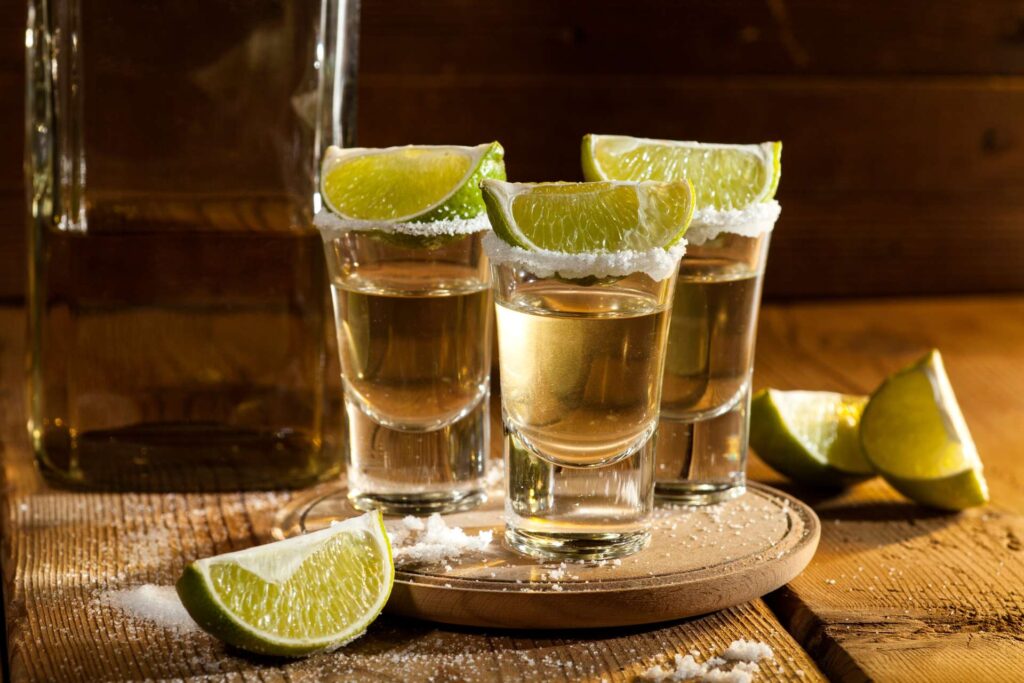
Tequila Sunrise
Ingredients:
- 2 oz Blanco tequila
- 4 oz orange juice (freshly squeezed)
- 0.5 oz grenadine
- Orange slice and maraschino cherry for garnish
Instructions:
- Pour: Pour tequila and orange juice into a highball glass filled with ice.
- Add Grenadine: Slowly pour grenadine over the back of a spoon so it sinks to the bottom, creating a sunrise effect.
- Garnish: Garnish with an orange slice and a maraschino cherry.
Paloma
Ingredients:
- 2 oz Blanco tequila
- 0.5 oz lime juice (freshly squeezed)
- Pinch of salt
- Grapefruit soda (e.g., Jarritos) to top
- Lime wedge for garnish
Instructions:
- Mix: In a highball glass filled with ice, combine tequila, lime juice, and a pinch of salt.
- Top: Top with grapefruit soda.
- Garnish: Garnish with a lime wedge.
Unique cocktails can add a twist to traditional recipes:
Tequila Mojito
Ingredients:
- 2 oz Blanco tequila
- 1 oz lime juice (freshly squeezed)
- 0.75 oz simple syrup
- 6-8 fresh mint leaves
- Club soda
- Mint sprig and lime wheel for garnish
Instructions:
- Muddle: In a glass, muddle the mint leaves with lime juice and simple syrup to release the mint’s essential oils and combine the flavors.
- Mix: Add tequila and fill the glass with ice.
- Top: Top with club soda to add a refreshing fizz.
- Stir: Stir gently to combine all the ingredients.
- Garnish: Garnish with a mint sprig and a lime wheel for a refreshing presentation.
Spicy Tequila Mule
Ingredients:
- 2 oz Blanco tequila
- 0.5 oz lime juice (freshly squeezed)
- 4 oz ginger beer
- 2-3 thin slices of fresh jalapeño (adjust to taste)
- Lime wedge for garnish
- Jalapeño slice for garnish
- Ice cubes
Instructions:
- Prepare the Jalapeño:
- Slice a fresh jalapeño into thin rounds. Depending on your spice tolerance, you can adjust the number of slices. Removing the seeds will reduce the heat level.
- Muddle the Jalapeño:
- In a copper mug or a highball glass, muddle the jalapeño slices gently. This releases the spicy oils into the drink. If you prefer a milder drink, you can skip this step and simply add the slices later.
- Add Tequila and Lime Juice:
- Pour 2 oz of Blanco tequila and 0.5 oz of freshly squeezed lime juice into the glass over the muddled jalapeño.
- Add Ice:
- Fill the glass with ice cubes to the top. Using crushed ice will help dilute the drink slightly, balancing the spice.
- Top with Ginger Beer:
- Pour 4 oz of ginger beer over the ice. The ginger beer adds a refreshing zing and complements the spice of the jalapeño and the lime’s acidity.
- Stir:
- Gently stir the mixture to combine the flavors. Be careful not to over-stir, as you don’t want to lose the carbonation from the ginger beer.
- Garnish:
- Garnish with a lime wedge and a jalapeño slice on the rim of the glass. This not only adds to the presentation but also gives an extra hint of the ingredients used.
- Serve:
- Serve immediately to enjoy the full, refreshing flavors of the Spicy Tequila Mule.
Tips for the Perfect Spicy Tequila Mule:
- Adjust the Spice Level:
- If you prefer a spicier drink, add more jalapeño slices or leave the seeds in when muddling. For a milder version, use fewer slices or remove the seeds.
- Use High-Quality Ginger Beer:
- The quality of the ginger beer can significantly impact the taste of your cocktail. Opt for a premium ginger beer that has a robust flavor and carbonation.
- Experiment with Different Peppers:
- If you’re adventurous, try using different types of peppers, such as serrano or habanero, for varying levels of heat and flavor profiles.
- Chill the Glass:
- For an extra refreshing experience, chill your copper mug or glass in the freezer for a few minutes before preparing your drink.
- Use Fresh Lime Juice:
- Freshly squeezed lime juice is crucial for the best flavor. Avoid using bottled lime juice as it can have a different, less vibrant taste.
Tequila is a versatile and culturally rich spirit that offers a wide range of experiences, from sipping straight to mixing in cocktails. By understanding its production process and learning to make and enjoy it, you can truly appreciate the craftsmanship behind every bottle. Explore different types and brands, experiment with cocktails, and share your tequila journey with others.
References and Further Reading
– [Tequila Regulatory Council]
– [The Tequila Dictionary]
– [Agave Spirits Institute]


